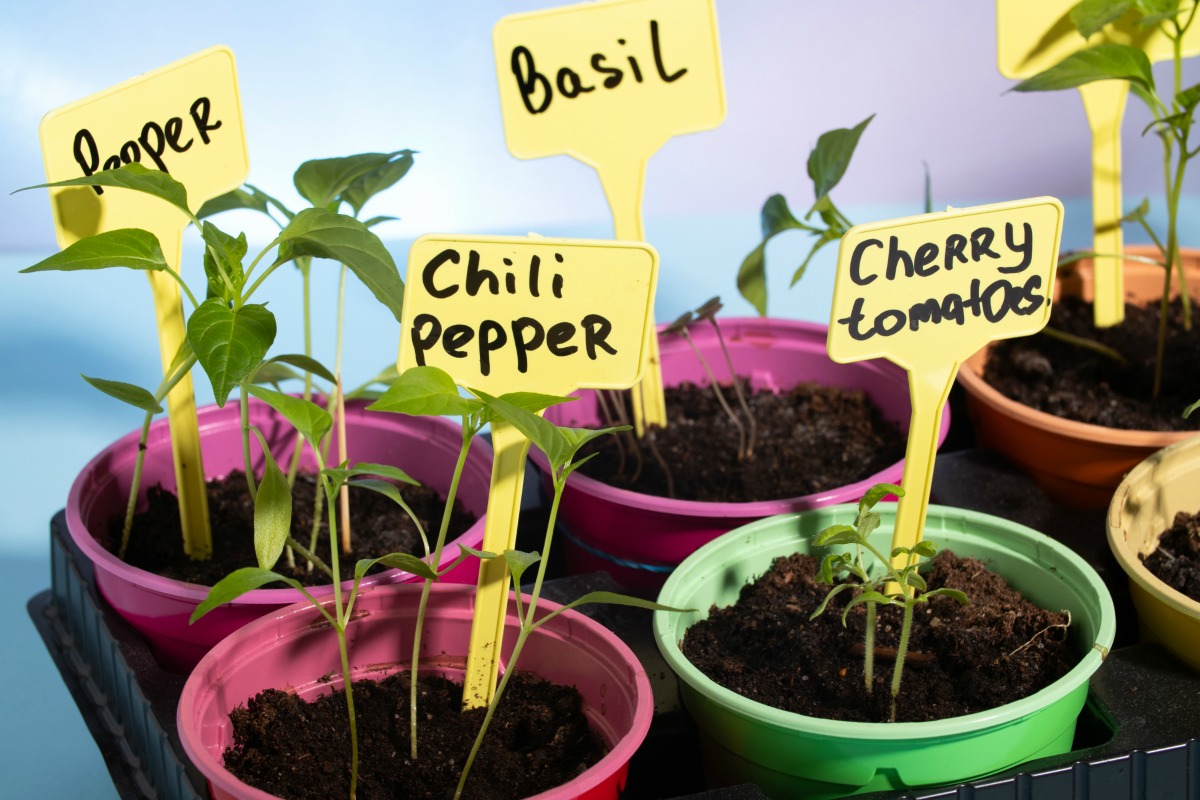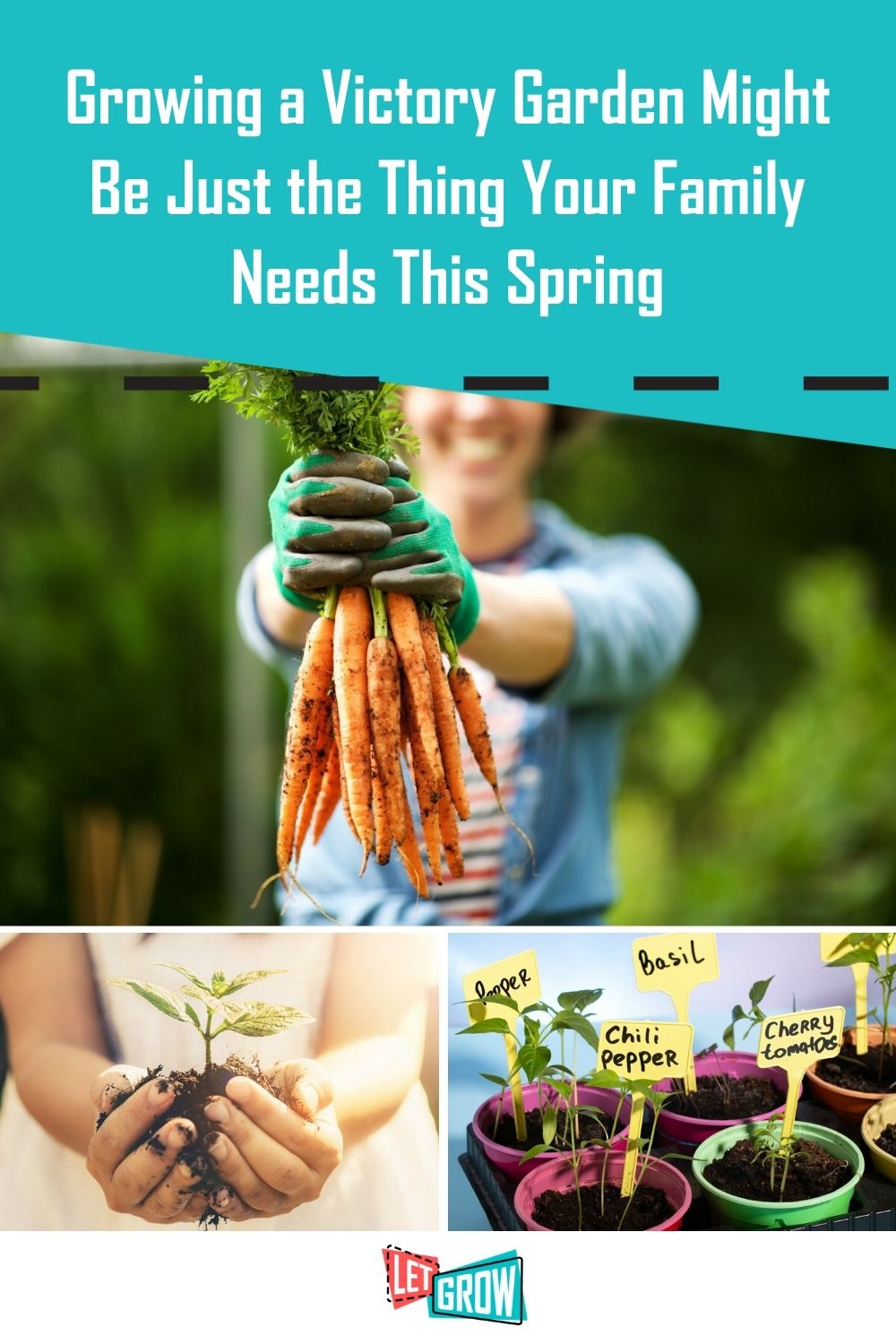






Growing a Victory Garden Might Be Just the Thing Your Family Needs This Spring
“To plant a garden is to believe in tomorrow.”
This famous quote by Audrey Hepburn is resonating with people around the world right now. While most businesses are struggling, many seed and garden companies are looking to report their best year ever. As the coronavirus spreads, people are trying to find ways to stay busy, have an impact, and even lend a helping hand.
Enter the power of planting a victory garden. Even better—get the whole family involved.
Growing a victory garden is about so much more than growing your own food.
Victory gardens date back to World War II. Also called war gardens, people all over the country came together to plant fruit and veggie gardens at their homes and in public spaces. Not only was it a way for them to help with food supply and shortages, but it was also a way to boost morale and promote patriotism. Since not everyone could be on the front lines of the war, victory gardens were a way for people to do their part at home by growing their own food.
Now more than 70 years later, victory gardens are surging in popularity again, with people looking at gardening as a way to fight the pandemic and reduce stress.
Gretchen Mead is an eco-therapist and former executive director of the nonprofit Victory Garden Initiative, located in Milwaukee. She helped launch the group during the recession in 2009 as a way to help local communities grow their own food, especially in urban areas and low-income neighborhoods.
She says the victory gardens of today represent those same set of values that her organization was founded upon.
“It’s localizing food systems, growing your own food, finding a way to reduce your carbon footprint, and supporting your own community,” Mead says. “It’s not a radical notion to be prepared for something (a food shortage) that might happen in the future. Victory gardens bring this more into the mainstream.”
Kids can do their part in creating a successful family garden.
So is it a family affair? Mead has worked with kids on gardening projects for years and is also a mom of a 11-year-old and 14-year-old. She says gardening is absolutely a family activity. It’s even something kids can do on their own.
“One hundred years ago, an 11-year-old and a 14-year-old would’ve been out there doing it all on their own,”she says. “Kids deserve more than what we give them credit for. We sort of put their usefulness off in our current society, where we basically tell them to go to school for 20 years and then they can be useful. We need to show kids that they’re needed and useful now.”
If you have kids who want to garden, great. You won’t have trouble convincing them. But for kids who aren’t as sure, Mead recommends letting them experiment and have input along the way. Before even getting out to plant, she says to get kids researching, planning, and looking up pictures of what they want to grow.
Then when it is time to dig in the dirt, Mead says to let kids do the leading to figure out what works for them. For her daughter, this means picking out seeds and planning the varieties. For her son, this means moving things around for her and getting out his ax to prepare a garden area.
Even though the garden is all planted, you’re not finished. Every good garden needs care and attention, and kids should be involved. General garden maintenance and watching something go from seed to plant to fruit can yield great life lessons in patience, self-confidence, and responsibility.
So how do you get started with your victory garden?
As a kid who had my own farmers’ market veggie stand growing up and the former editor of a gardening magazine, I do have a few starter tips. These are also good activities for your kids to do with our Independence Kit.
First, get buy-in from your kids and the rest of the family.
You can have your own lovely dreams of making this a happy, joyful family experience, but that doesn’t mean everyone else in the house agrees. Rally the family and get them all on board for growing a garden. I have two kids, and I can tell you my son loves to garden while my daughter is pretty eh about it all. The way I’ve gotten her to join in is by giving her freedom to choose what she wants to grow. (It’s almost always strawberries.) It can actually be a lot of fun to map out your garden and plan what you’re going to grow. But you can’t force enthusiasm. Try to get them interested early on before planting day.
Second, don’t overdo it.
Gardeners never have trouble filling their garden. Just flipping through one seed catalogue or looking online at one site will give you so many ideas, but try to remember what you have time and space for. Watermelons seem great until you realize you need about 24 square feet for a single plant. Figure out what is manageable and then build your plan from there. If you don’t have space, consider renting a community garden plot in your area. Just do a web search to find one. And if you want to make the most of your space, look into containers, raised beds, and this awesome method, called square foot gardening. It’s what my family currently does, and it really maximizes our options.
Third, if your seed-starting efforts fail, have back-up plants ready to go.
Right now, I’m hearing a lot of news about people starting their own seeds—seed companies are breaking sales records. That’s great. The satisfaction of growing food from a seed is hugely rewarding. However, it’s not always easy. So many things can go wrong with seedlings, so don’t put all your efforts into them. (I’ve had plenty of years where my seeds just didn’t make it, and it’s really frustrating.) Keep this in mind as you’re planning. You might want to have a back-up plan ready to go, like ordering online or picking up from a local garden center. This is going to be a busy garden season, and you’ll be glad you made plans early.
And finally, have your kids take ownership every step of the way.
The fun part of a garden is the planning and planting, but the real life lessons and accomplishments come in the work after. Gardening does include chores like weeding, watering, and general upkeep. Don’t forget this part. I swear it’s the biggest reason gardens fail for most people. Gardens can be needy, but they’re worth it. Food shortage or not, they really are a great opportunity for families to come together and for kids to grow their independence.






Comments are closed for this article.